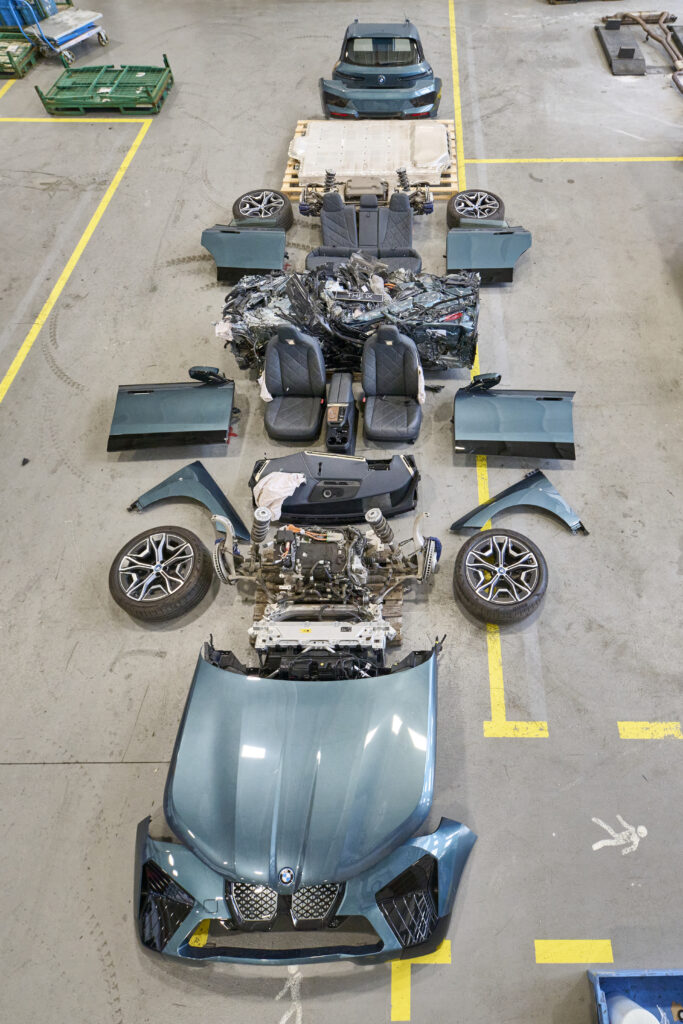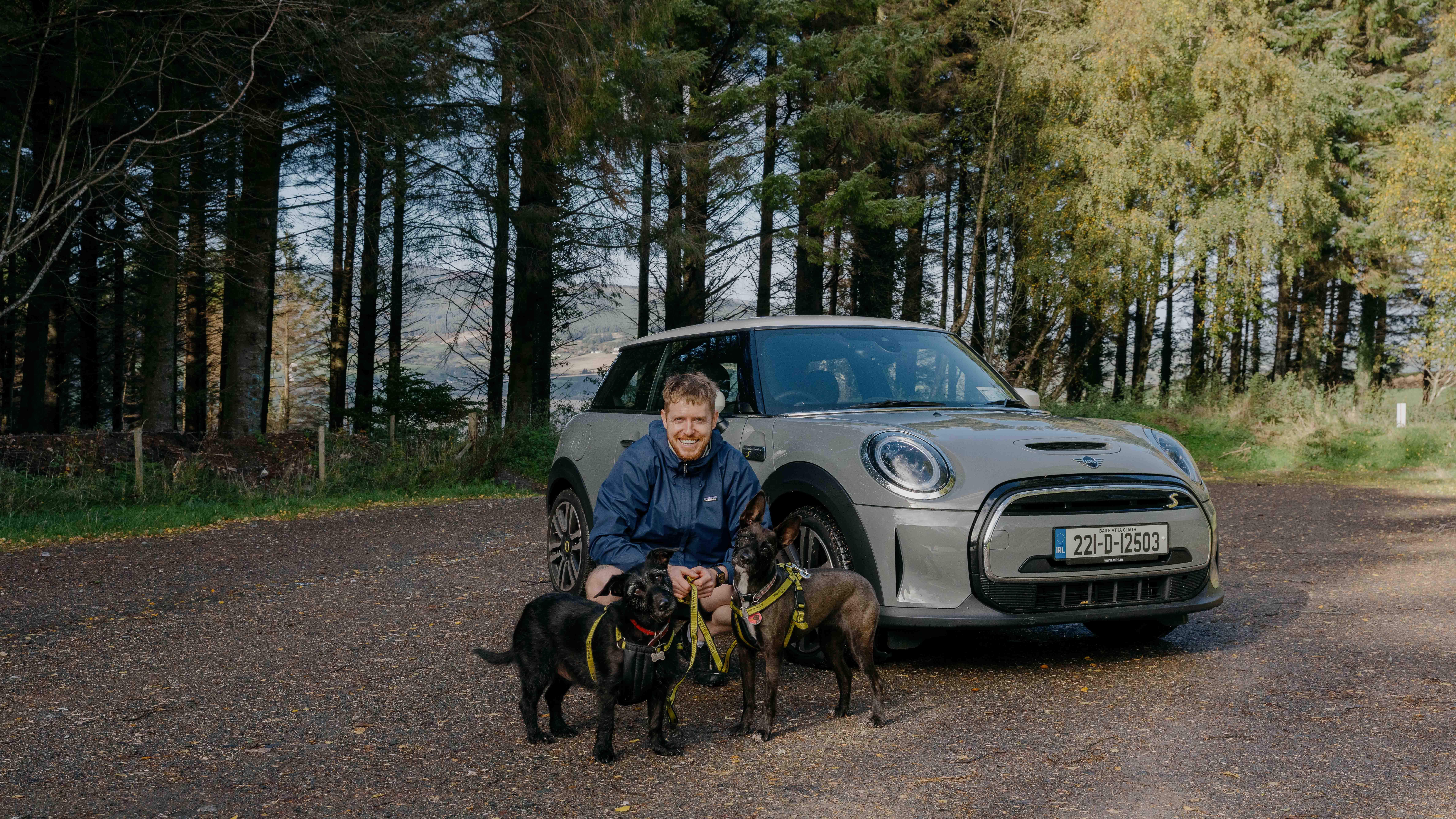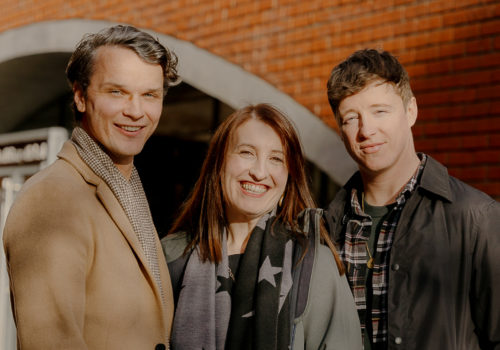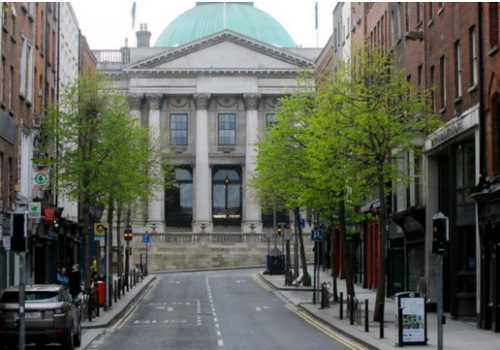How we can build a circular economy





Image: Thomas Bormans
Words: Ellen Kenny
Images: Unsplash
As individuals we can’t solve the threat of the climate crisis. That’s not to say we can’t contribute to a solution but it needs to come alongside systemic change, both in the way we consume and produce. So, District has teamed up with BMW Ireland to highlight some alternative systems that provide the opportunity to make a genuine impact.
At this point, we’re all familiar with anxiety-inducing headlines and the seemingly daily alarming statistics online, but seeing it play out in real time is an entirely different beast. Seasonal changes in weather are becoming increasingly drastic and in Ireland we recently saw one of the hottest summers in recorded history. It puts at risk the health of our older, vulnerable citizens in a country not built for extreme heat and while it’s frightening in northern Europe, the situation is even worse in the Global South. Bangladesh, for instance, is projected to lose 11 per cent of its land by 2050, leaving one in every seven inhabitants homeless.
Put simply, society, the economy and pretty much our entire existence are at the mercy of climate change. Moreover, as most people have come to realise, the crisis is not a problem rooted in individual choices. When 100 companies are responsible for 71 per cent of global greenhouse gas emissions since 1988, it’s hard to imagine what impact we regular individuals have on changing anything. It’s startling to know that you are barely a cog in an environmental system and, at worst, it can leave you dejected, burnt out, and unmotivated.


Seeking Alternatives
Right now, the linear economy is the pervasive means of production. Resources go through a “take-make-dispose” process, where raw materials are collected, and then transformed into products that are used until they are finally discarded as waste. It’s not hard to understand how it’s an incredibly wasteful system that puts profit over everything. It’s also how we end up with approximately 2.1 billion tonnes of solid waste each year and how landfills form, forests are decimated, our greenhouse gas emissions rise and our planet suffers.
However, there is a way to reimagine the way we collectively consume, produce and empower ourselves individually to work towards a greener planet – the circular economy. This model focuses on reusing products and harvesting materials from finished items to create something new.


In contrast to the individual, finite nature of the linear economy, the circular economy is a model of production and consumption centred around sharing, reusing, repairing, refurbishing and recycling. What’s more is, rather than trying to mitigate the risks of climate change by removing waste in a more sustainable way, the circular economy prevents the production of waste in the first place. Admittedly, it’s not exactly a groundbreaking idea and doesn’t halt the proliferation of fossil fuels but it is an accessible approach with immediate effects.
Roughly 45 per cent of global greenhouse gas emissions come from food production, product use and manufacturing. Through a circular economy, less natural resources are ravaged, less pollution is produced, and less waste is created. With this in mind, implementing a circular economy could reduce global greenhouse gas emissions by 39 per cent. By reusing resources, we can also reduce our consumption of natural resources by up to 70 per cent, restoring the natural environment.


For big-business cynics unconcerned with the state of the planet, there’s research that speaks their language – money. Research suggests that this approach could generate up to 4.5 trillion dollars of economic output by 2030 through new jobs centred around implementing and maintaining the circular economy.
However, implementing is a different conversation, especially when a circular economy is contingent on new legislation and corporations playing ball. It’s not all dire though. Initiatives to increase consumer-focused sustainability have had successes in the past. We can look back to 2002 when the Irish government introduced a levy on plastic bags being sold in supermarkets. Similarly, last year the government announced a proposed ‘Latte-Levy’ on coffee shops to address the waste of disposable cups. While in the private sector, BMW is a positive example. Their vehicles are already made from up to 30 percent recycled and reused materials.
Research suggests that this approach could generate up to 4.5 trillion dollars of economic output by 2030
Acting Locally
Climate anxiety is real and reducing it is no easy feat. Like most of life’s problems, it’s best to do what is in your control and surrender to what is not.
When you are conscious that major corporations hold much of the responsibility for harmful emissions, trying to reduce the effects of climate change on an individual level can feel like a fool’s errand. Climate anxiety is real and reducing it is no easy feat. Like most of life’s problems, it’s best to do what is in your control and surrender to what is not. That’s not to say to give up, but instead to focus on your immediate surroundings and act locally. The beauty of a circular economy is that you can often clearly see the impact your efforts are having on your life own and environment.
When it comes to consuming, engaging in the circular economy can be easy when you know where to look. Most coffee shops have introduced discounts or deals when you bring your own cup, helping you save some change while saving the planet in some small way. You can also shop secondhand, and not just in vintage shops that charge over 20 euro for one item. There are countless charity shops in towns and cities offering good quality second-hand pieces for cheap, so you can find an alternative to fast fashion without breaking the bank.


There are also ways to live a circular life that lead to a better planned life. Proper food production and consumption is a pillar to the circular economy, and it’s something that we can all easily do at home. Sourcing food locally helps your community and your environment, and planning your meals in advance makes sure that you get the absolute most of that food, reducing waste in your bin and in your wallet. Innovative recipes are also always available, teaching you how to make delicious meals out of ingredients typically discarded from fruit peels to the stems of broccoli. Click here to find some recipes using “wasted” ingredients, and click here to pre-order “Wasted”, an upcoming Blasta Books publication dedicated to creating delicious recipes using the most wasted food items in our homes.
Circular solutions also bring you closer to those around you as you reuse and reshare. You can lend books to friends so they don’t buy their own. You can donate clothes to charity shops, or give clothes to friends. You can bring your old furniture back to places like IKEA. The circular economy not only reshapes our environment, it can reshape how we interact with those around us, and feel more connected.


The circular economy not only reshapes our environment, it can reshape how we interact with those around us, and feel more connected.


Go Big Or Go Home
While personal initiatives help to reduce waste, the sentiment of a circular economy is, unambiguously, go big or go home. There’s only so much consumers can do in the current take-waste-make system.
A report published by the OECD suggests a number of strategies and potential policies to create a circular economy in Ireland.
Namely, implementing a legislative and regulatory framework, creating economic incentives and funding opportunities for businesses, and creating an information-based education platform supplemented by awareness campaigns.


Sindy Süßengut
While personal initiatives help to reduce waste, the sentiment of a circular economy is, unambiguously, go big or go home.
While the current plan has eight key priorities (packaging, plastics, textiles, nutrients, construction, electronics and batteries and vehicles), it notably doesn’t touch on agriculture.
In 2021, the Environmental Protect Agency’s research found that the agricultural industry was directly responsible for 37.5% of greenhouse gases and emissions.
While there are undoubtedly efforts being made, a full commitment to sustainability within industry is needed in order to make the environmental impact that is hoped for. Taking Automotive as huge start, BMW are on that mission themselves to create dynamic solutions for a better future. Click here learn more about their goals and strategies, including their drive to build a circular economy within their business.





